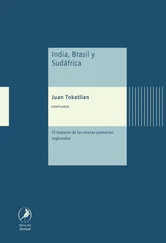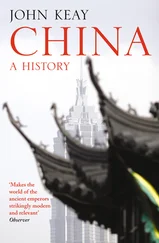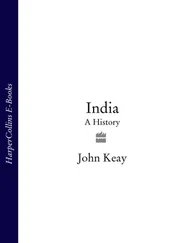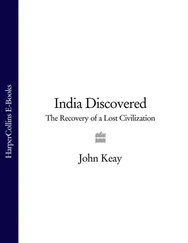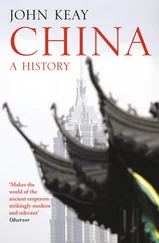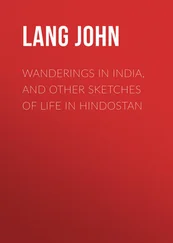With him from India had gone the wherewithal for a vastly enriched Western image of the land beyond the Indus. He had prised open a window on the East through which emissaries would pass, ideas would shine, and prying eyes would covet. With him too went all those Hellenised personae and places – Omphis, Aornos, Porus, the Malloi and countless others – never to be heard of again in India’s history. The ‘invasion’ had amounted to little more than a hasty intrusion, scuffing a corner of the carpet but neither baring its boards nor troubling its political furniture.
With Alexander there had also gone one ‘Calanus’, a figure worth remembering in that he seems to be the first Indian expatriate to whom a name and a date can confidently be given. One of a group of ascetics encamped near Taxila, Calanus had accepted Alexander’s invitation to join him in that city and subsequently accompanied him back to the west. There, in Persia shortly before his patron’s death, his own death would cause a sensation.
Calanus’ doctrinal persuasion is uncertain. As one of his companions at Taxila had put it, trying to explain one’s philosophy through a wall of interpreters was like ‘asking pure water to flow through mud’. In that Calanus and his friends went naked, a condition in which no Greek could be persuaded to join them, they may have been nigrantha or Jains. Jain nudity was dictated by that sect’s meticulous respect for life in all its forms. Clothes were taboo because the wearer might inadvertently crush any insect concealed in them; similarly death had to be so managed that only the dying would actually die. Jains bent on ending their life, therefore, usually starved themselves to death. Yet Calanus, a man of advanced years, chose to immolate himself on his own funeral pyre. Though an extraordinarily stoical sacrifice in Greek eyes, this was a decidedly careless move for one dedicated to avoiding casual insecticide. Evidently the Persian winter had induced a chill, if not pneumonia, and Calanus had decided it was better to die than be an encumbrance. No one, not even Alexander, could dissuade him from his purpose. He strode to his cremation at the head of an enormous procession and reclined upon the pyre with complete indifference. This composure he maintained even as the flames frazzled his flesh.
Visibly shaken by such an exhibition, the Greeks held a festival in his honour and drowned their sorrows in a Bacchanalian debauch. Calanus, though he had made no converts, had won many friends. He also left a profound impression well worthy of India’s first cultural emissary. ‘Gymnosophists’, or ‘naked philosophers’, henceforth became stock figures in the Western image of India. As ‘Pythagoreans’, they were also identified with Greek traditions of abstinence and the conjectures of Pythagoras about rebirth and the transmigration of the soul. Lucian, Cicero and Ambrose of Milan all wrote of Calanus and his naked companions. Much later, as the epitome of ascetic puritanism, India’s gymnosophists would be revered by, of all people, Cromwellian fundamentalists. And later still, as mystics, gurus and maharishis, they would come again to minister to another spiritually impoverished Western clientele.
5 Gloria Maurya C320–200 BC
FLASHES OF INSPIRATION
ALTHOUGH SEVERAL of those who marched east with Alexander wrote of their travels, and although other contemporaries and near-contemporaries compiled lives of Alexander and geographies based on his exploits, none of these survives. Such accounts were, though, still current in Roman times and were used by authors, including Plutarch, the first-century AD biographer, and Arrian, the second-century AD military historian, to compile their own works on Alexander. These do survive. They do not always agree; scraps of information gleaned from other later sources are included indiscriminately; and when describing India, they often dwell on fantastic hearsay. To the gold-digging ants of Herodotus were now added a gallery of gargoyle men with elephant ears in which they wrapped themselves at night, with one foot big enough to serve as an umbrella, or with one eye, with no mouth and so on.
Allowing for less obvious distortions, these accounts yet provide vital clues to the emergence after Alexander’s departure of a new north Indian dynasty, indeed of an illustrious empire, one to which the word ‘classical’ is as readily applied as to those of Greece and Rome – and with good reason, in that it has since served India as an exemplar of political integration and moral regeneration.
In 326 BC, when Alexander was in the Panjab, ‘Aggrames’ or ‘Xandrames’ ruled over the Gangetic region according to these Graeco-Roman accounts. His was the prodigious army at which Alexander’s men had balked; and his father was the low-born son of a barber and a courtesan who had founded a dynasty with its capital at Pataliputra. ‘Andrames’ was therefore a Nanda, probably the youngest of Mahapadma Nanda’s sons. And since, unusually, these Graeco-Roman accounts agree with the Puranas that Nanda rule lasted only two generations, he was the last of his line. Immensely unpopular as well as dismally documented, the second Nanda was about to be overthrown.
According to Plutarch, Alexander had actually met the man who would usurp the Magadhan throne. His name was ‘Sandrokottos’ (‘Sandracottus’ in Latin) and in 326 BC he was in Taxila, perhaps studying and already enjoying Taxilan sanctuary as he prepared to rebel against Nanda authority. No such person, however, is known to Indian tradition, the voluminous king-lists in the Puranas containing no mention of a ‘Sandrokottos’ sound-alike. Although from other Greek sources, especially the account of Megasthenes, an ambassador who would visit India in C300 BC, it was evident that someone called Sandrokottos had indeed reigned in the Gangetic valley, it was still not clear to which if any of the many listed Indian kings he corresponded, nor whether he ruled from Pataliputra, nor whether he could be the same as Plutarch’s Sandrokottos. Like Porus and Omphis, it looked as if Sandrokottos was either a minor figure or else someone whose name had been so hopelessly scrambled in its transliteration into Greek that it would never be recognisable in its Sanskritic original.
It was Sir William Jones, the charismatic father of Oriental studies and pioneer of Indo-Aryan linguistics, who in another flash of inspiration rescued the reputation of Sandrokottos. ‘I cannot help mentioning a discovery which accident threw my way,’ 1he told members of the Bengal Asiatic Society in his 1793 annual address. In the course of exploratory forays into Sanskrit literature he had earlier worked out that Sandrokottos’ capital could indeed have been the Magadhan city of Pataliputra. He had now come across a mid-first-millennium AD drama, the Rudra-rakshasa , which told of intrigues at the court of a King Chandragupta who had usurped the Magadhan throne and received foreign ambassadors there. The flash of inspiration, the ‘chance discovery’, was that ‘Sandrokottos’ might be a Greek rendering of ‘Chandragupta’. This was later established by the discovery of an alternative Greek spelling of the name as ‘Sandrakoptos’. The ‘Sandrokottos’ of Plutarch and of Megasthenes, and the Chandragupta of this play and of occasional mention in the Puranas , must be the same person. Crucially and for the first time, a figure well known from Graeco-Roman sources had been identified with one well-attested in Indian tradition.
At the time, the late eighteenth century, the excitement generated by this discovery stemmed from its relevance for Indian chronology. Very little was yet known of Chandragupta or the empire he had founded; the latter would only be recognised as an exceptional creation following even more exciting discoveries in the nineteenth century. In Jones’s day his breakthrough was applauded solely because it at last made possible some cross-dating between, on the one hand, kings (with their regnal years) as recorded in the Puranas and, on the other, ascertainable dates in the history of western Asia. Thus, for instance, if Chandragupta was planning his rebellion against the Nandas when Alexander was in the Panjab, if according to Indian tradition he ruled for twenty-four years, and if Megasthenes, the Greek ambassador to the court of ‘Sandrokottos’, could not have been sent until after 305 BC, it followed that Chandragupta’s revolt must have started soon after 326 BC and have lasted three to four years, so that he then reigned from his many-pillared palace in Pataliputra from approximately 320 to 297 BC. That meant that his successor, Bindusara, ruled from 297 to 272 BC, and that Bindusara’s successor, an enigmatic figure who had yet to be clearly identified (let alone accorded universal recognition as ‘one of the greatest monarchs the world has ever seen’ 2), must have acceded (after a four-year interregnum) in about 268 BC.
Читать дальше


